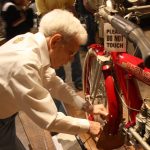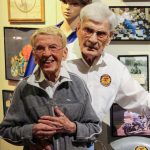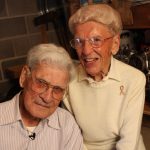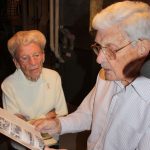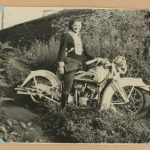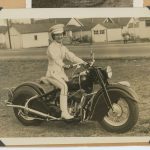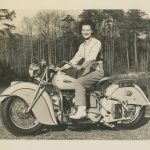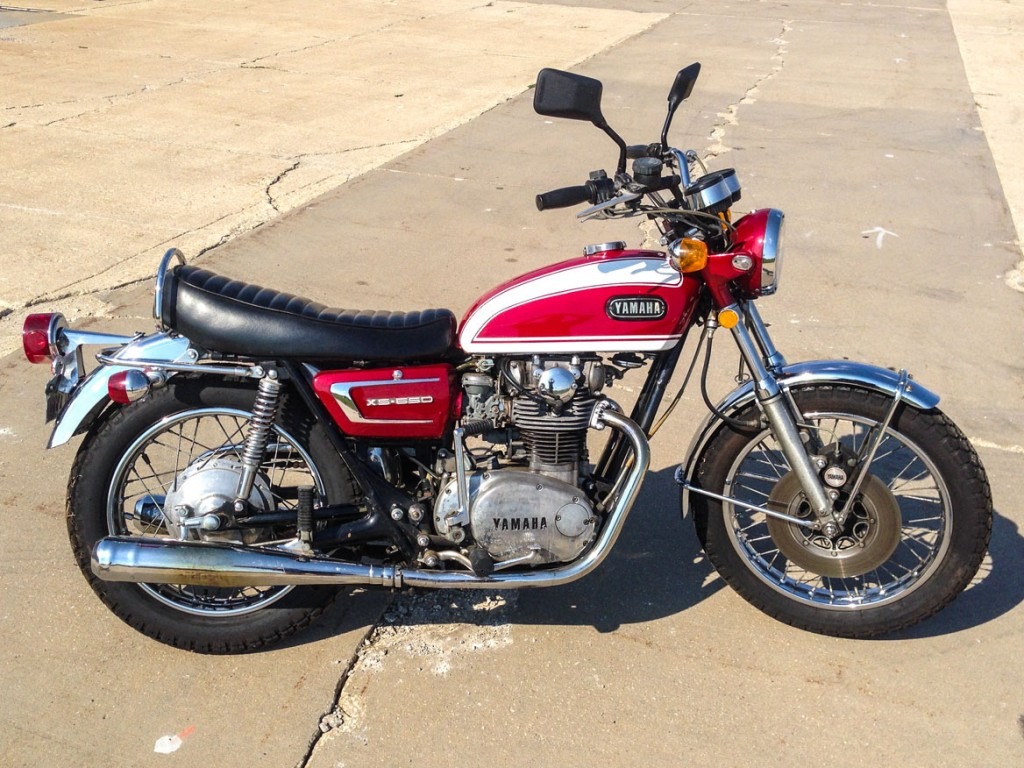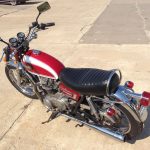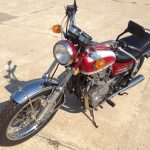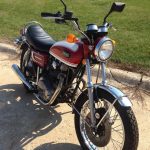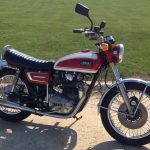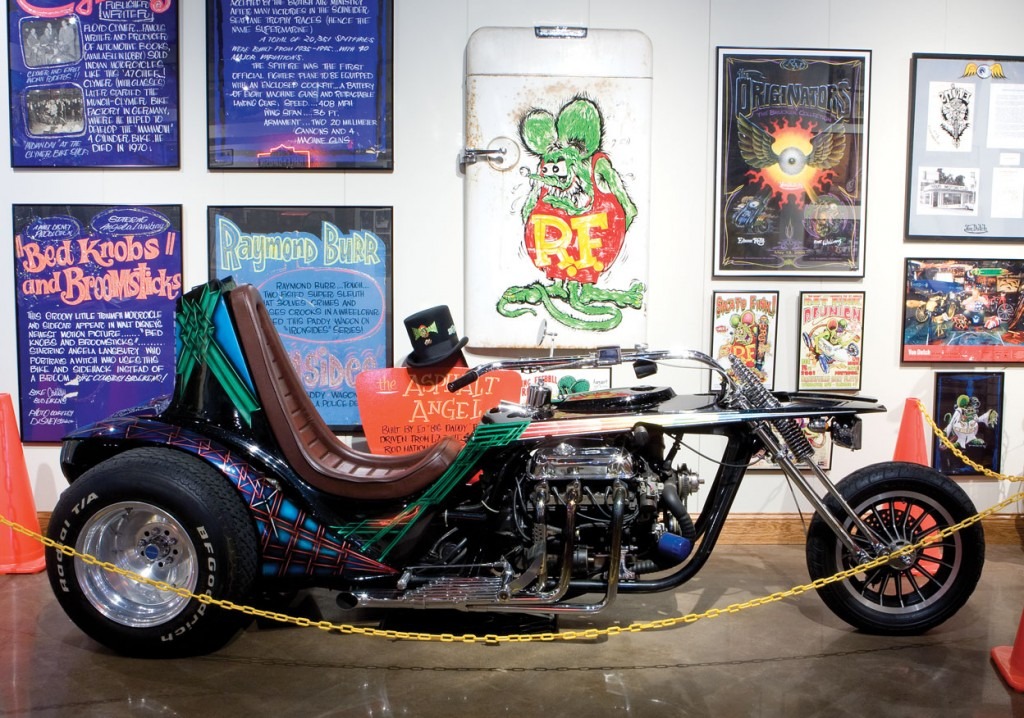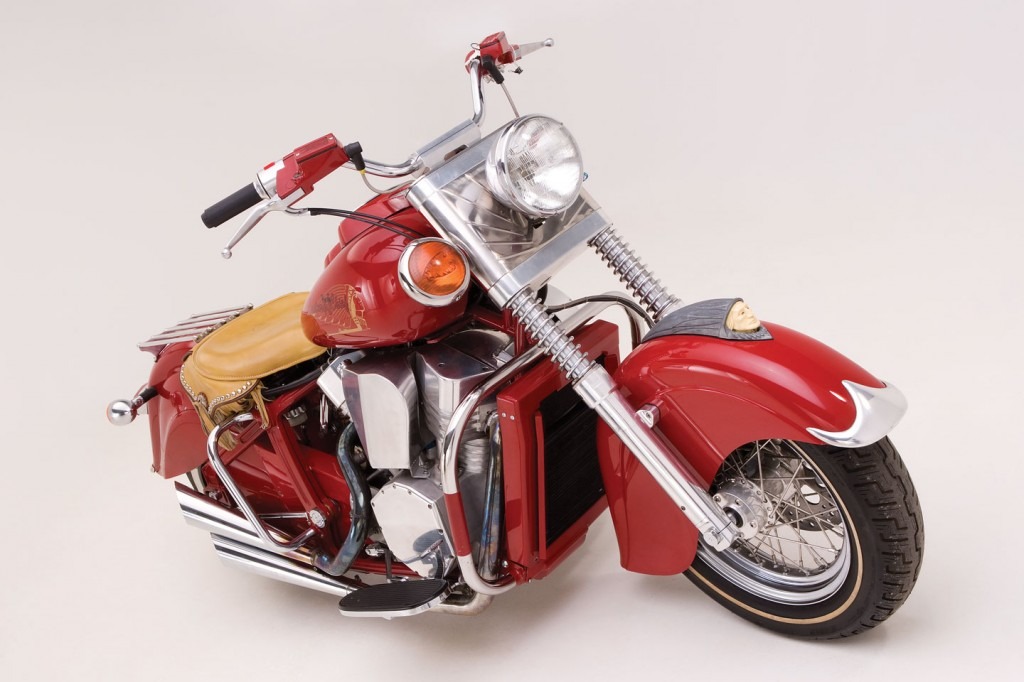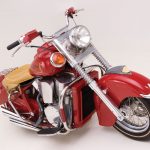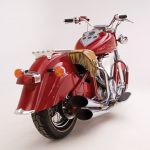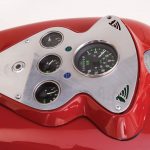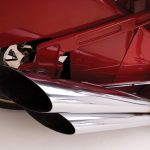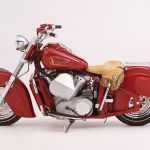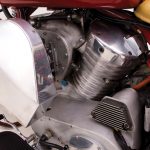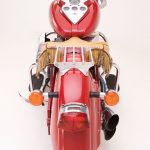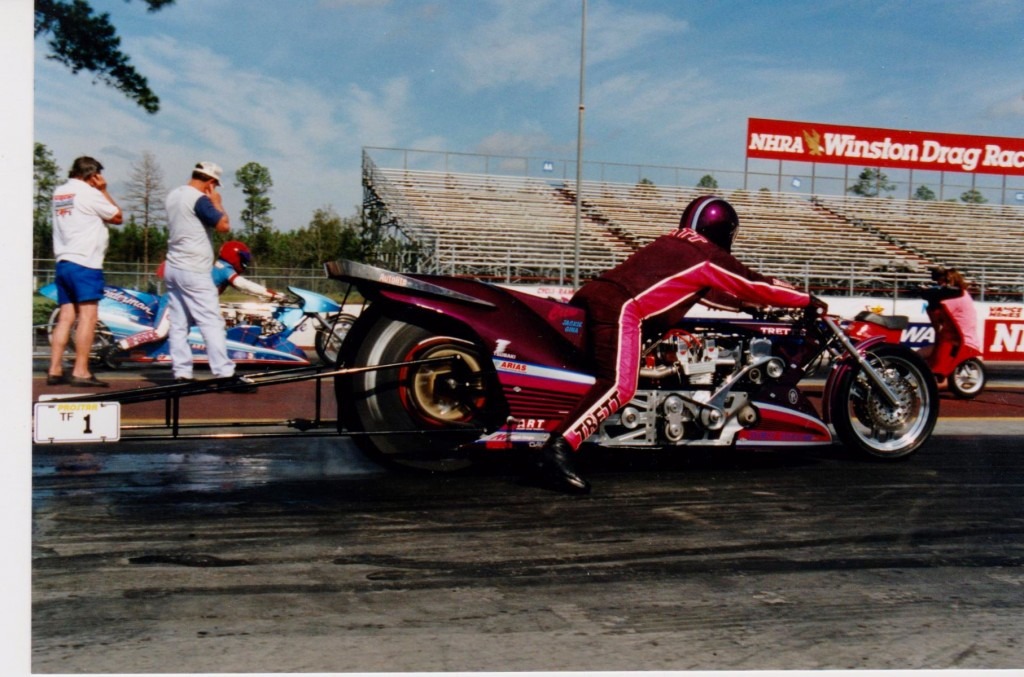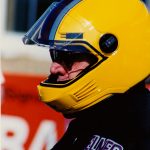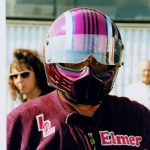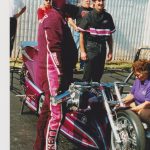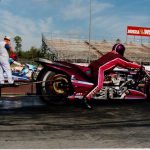Mike and Margaret Wilson Memorial Established
/0 Comments/in News/by wedadminThe Passing of Great Motorcycling Friends, Margaret and Mike Wilson
/10 Comments/in News/by wedadmin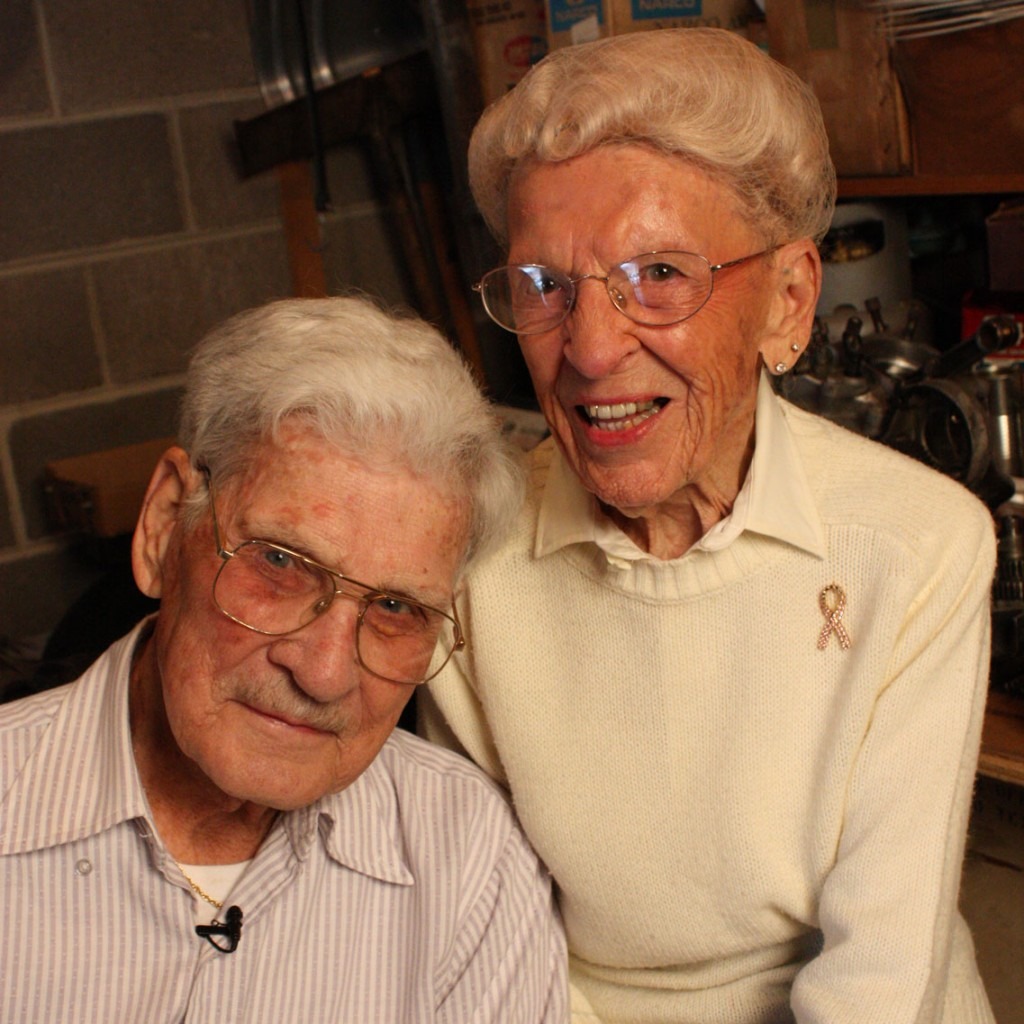
As we have grown, matured as motorcyclists, most of us have had older best friends, mentors, people we always see at events or stay in touch with. These are people who can help us with technical problems, or simply share their stories regarding how motorcycling was “back in the old days.” We respect their opinions, want to listen when they speak. They just seem to always be there for us as symbols of how to “do it right,” how best to live as motorcyclists. Until one day they are gone. Never to be talked with again.
Margaret and Mike Wilson of Cedar Rapids, Iowa have been those people for many of us, actually, all across America. Mike, the dirt track racer, pilot and airplane restorer, Bonneville Land Speed Record Sportster tuner, Margaret, Golden Life Member of the Motor Maids, named America’s Most Popular and Typical Girl Rider for 1958 by the AMA. Mike and Margaret, Harley-Davidson dealers, then Honda dealers, ambassadors, always motorcycling pals that put down motorcycle miles in 48 states. Active with any organization that seems to respect motorcycling history, they poured in hundreds of hours serving on boards, volunteering, sharing their spirit, and likely hundreds of thousands of their hard earned dollars to support the preservation and telling of motorcycling’s great history.
Motor Maids Exhibit Expansion; Helen Kiss Main Remembered
/2 Comments/in News/by wedadminThe Motor Maids organization was founded in 1940. Early members set its mission to be promotion of safe riding habits, motorcycle travel, encouraging members to be good ambassadors to motorcycling. And as time went on, to have a presence at large motorcycling events. Neat attire has always been part of the program as well, and a succession of approved apparel, down to boots, gloves and head gear have a history. When the National Motorcycle Museum reopened in its new home in 2010, a special exhibit area was established to honor women riders, and the Motor Maids are featured there. Recently the family and friends of the late Helen Kiss, who died in April, 2014, added to the Museum’s exhibitions Helen’s personal Motor Maids uniforms and other memorabilia. Helen was 94 and spent her life helping people, animals, nature and of course the image of motorcycling. The Pink Lady, as she was known, is missed, but the Museum display will help conjure her experiences in motorcycling.
1909 Vintage Harley Police Motorcycle, The earliest police model in existence.
/0 Comments/in News/by wedadmin
At the dawn of the last century, Harley-Davidson recognized that its rugged and reliable motorcycles were perfectly positioned to service law enforcement. Back then, good mobility was vital, and a single-cylinder Harley-Davidson provided that at a time when our country was just beginning to make the transition from the horse and carriage to motorized transportation. Easy to operate, economical to use, and a form of transportation that allowed widespread access to remote areas that needed policing, the earliest Harleys fit the bill. The archives state that the first sale of a Harley to a municipality for police work occurred in 1908, and Detroit was the first customer. From that humble beginning, Harley has expanded its efforts and focused on the law enforcement market to great success. Today, in the United States, over 3,400 police departments ride Harley-Davidson motorcycles. Worldwide, Harleys are used in over 45 countries, to keep the peace.
Our featured bike is an amazing, all-original 1909 Harley-Davidson police motorcycle owned by our good friend and amazing motorcycle enthusiast John Parham. It’s part of his vast collection of rare antique machines and one of my favorites for many reasons. It’s all original, and it’s also the earliest known Harley-Davidson police motorcycle in existence. That says it all.
The bike was sold to the La Crosse, Wisconsin, Police Department where it spent many years in service to the community. It passed through a few additional owners until it had outlived its usefulness and was then disassembled, put in boxes, and stored indoors for decades. It was then rediscovered,
reassembled, and donated to the La Crosse Historical Society. With no place to display it, the bike was then loaned to the local Harley-Davidson dealer who displayed it in a showcase for many years. Many people wanted to buy it, including John, but it was not for sale, and it remained on display for all the world to see. The La Crosse Historical Society was in need of cash to restore a local landmark building, so it decided to sell the machine to finance that restoration. A few collectors were aware it was on the market, but the price was steep due to its rarity and desirability. However, John was able to step up and become its next caretaker.

If you look the bike over carefully, you can see how well-preserved the machine really is. Complete down to its core, this motorcycle wears all its factory parts; its tall stance and proud heritage speak volumes about its journey through time. The paint, although worn, is all original and the La Crosse Wis PD designation resides in a small rectangular area outlined by factory pinstripes. The lettering was probably done by a local sign painter employed by the city. Wis of course stands for Wisconsin; this was long before the advent of the two-letter state designations we’ve all come to know and recognize.
The year 1909 was the first for the redesigned frame that incorporates a second top bar for added strength. The gas tank was also redesigned as a three-sided affair, a marked improvement over the 1908 frame and strap tank design. A metal toolbox first appeared that year, and beefier components like the front forks make the ride smoother and the chassis sturdier. The 28″ wheels put the rider up on a perch; and the 3.00″ clincher tires, though shaky by today’s standards, were state of the art back then. The handlebars have the cables running through them with the left grip used to retard and advance the spark and the right grip to control the throttle. This setup would last for decades. The single-cylinder motor has a bore of 3-15/16″, displaces 30″, and pumps out a claimed 4 hp! Power is transmitted to the rear wheel by a leather belt drive, and the clutch is activated and deactivated by the belt tightening handle on the left side of the bike. The rear brake is a coaster brake design, similar to what you probably had on your first bicycle. The bike retailed for $210, expensive by standards of the day, but well under what a car cost in the same period.
Harley also introduced its first V-twin in 1909, but that would disappear from the lineup the following year and return a few years later, remaining the heart and soul of a Harley-Davidson to this day.
Two colors were offered in 1909: Renault Gray with carmine striping and Piano Black. Together with their nickel-plated cylinders and assorted hardware, they were striking machines at the dawn of motor transportation.
 There was great optimism during this period, and motorcycling in general was gaining favor. Production numbers continued to climb for all brands, and it was anyone’s guess as to who would dominate the two-wheeled trade in 1909. Indian was becoming a powerhouse back East, and other brands were entering the field on a regular basis. It was an exciting time in the business, punctuated by innovation and advancement.
There was great optimism during this period, and motorcycling in general was gaining favor. Production numbers continued to climb for all brands, and it was anyone’s guess as to who would dominate the two-wheeled trade in 1909. Indian was becoming a powerhouse back East, and other brands were entering the field on a regular basis. It was an exciting time in the business, punctuated by innovation and advancement.
In 2010, John was invited to display the 1909 police bike at the world-famous Pebble Beach Concours D’Elegance. The bike is on loan to the National Motorcycle Museum, John being the museum’s founder. So, anytime you’re in Anamosa, Iowa, stop by and view this amazing time capsule from the dawn of cycling. Thank you, John, for your continued stewardship of this great machine and for putting it on display for all to enjoy and appreciate. AIM
Words by Jim Babchak, photos by Pam Proctor
Story as printed in American Iron Magazine.
Featured Rider: Vaughn Beals
/2 Comments/in News/by wedadmin
Classic Yamaha 650 Donated to the National Motorcycle Museum
/3 Comments/in News/by wedadminIn the past twelve months nine motorcycles have been donated to the National Motorcycle Museum’s permanent collection. One that many of us know and grew up with is a dark red and white 1971 Yamaha XS650 donated by the Tom Watters family, natives of Anamosa, Iowa. Purchased new and kept for over 40 years, in Tom’s words, the machine still means a lot to him:
“This 1972 Yamaha was donated by Tim, Tom and Mary Ann Watters to the National Motorcycle Museum in memory of their parents George and Mary Watters of Anamosa, Iowa. Tom bought the bike in 1972 while in college at the University of Iowa and chose the 650 because he wanted a bigger, faster and more durable ride. Tom kept and rode the bike for 41 years because it reminded him of his college days and youth–some of the happiest days in his life. His motorcycle career ended in September 2013 in a near fatal motorcycle crash riding his Harley Soft Tail Classic. Based on the urging from his brother Tim for Tom to stop riding and donate the Yamaha 650 to the National Motorcycle Museum, he did so and now other people can enjoy this wonderful piece of motorcycle history.”
Tom’s Yamaha will get a good cleaning and wax job and be put on display in the Museum. It’s a classic, most would agree is based on the very successful designs of Edward Turner and his Triumph parallel twins of the late 1930’s and beyond but with disk brake and overhead cam upgrades.
*Do you have a motorcycle, or motorcycle memorabilia that that you would like to donate for display at the National Motorcycle Museum? We can tell you how motorcycle donation can benefit you. Please let us know what you may want to donate by calling 319 462 3925, or email us at museum@nationalmcmuseum.org
Featured Motorcyclist: Ed "Big Daddy" Roth, Extreme Motorcycle Customizer and Builder
/9 Comments/in News/by wedadmin
Featured Entrepreneur – Wayne Baughman, Creator of the Century Chief
/6 Comments/in News/by wedadminWayne Baughman was an industrious guy who, about 1994 decided he should make the next great American motorcycle. He wanted it to look like an Indian, but employ current technology. And he skirted getting rights to the Indian trademark, just made his bikes look like classic Chiefs. As his story developed, Baughman also claimed he would be strong competition for Harley-Davidson, the sole surviving American motorcycle brand, promising to manufacture as many as 100,000 Century Chiefs a year. And this was in a time when even the well established Harley-Davidson was selling only a little over 100,000 units, making $1.1 Billion dollars in motorcycle sales alone, and another $1M in licensed apparel, etc. Baughman was making a very optimistic promise to investors, dealers, and motorcycle enthusiasts.
The next chapter in the Indian story began about 1998 in Gilroy California with the newly formed Indian Motorcycle Company of America. This group was awarded the Indian trademark rights by a Colorado court in 1998. Though several thousand motorcycles were manufactured and sold, technical problems, distribution, the use of a typical S&S engine and the lack of true Indian uniqueness conspired to cause production to end in 2003.
Featured Rider, Top Fuel Drag Racing Champion, Elmer Trett
/6 Comments/in News/by wedadmin
Pages
- 13th Annual East Central Iowa Sidecar Rally
- 14th Annual East Central Iowa Sidecar Rally – Sept. 9, 2017
- 1909 Royal Pioneer
- 1912 Pierce Four
- 1914 Yale Twin
- 1923 Ner-A-Car Model A
- 1936 Harley-Davidson VLD
- 1939 Harley-Davidson EL "Piston Splitter"
- 1948 Indian Scout "Big Base"
- 1951 HD FL Cop Bike
- 1952 Vincent "Red" Rapide
- 1954 Harley-Davidson John Tibben's KR750 Dirt Track Racer
- 1955 Goggo 200 DeLuxe Scooter
- 1957 BSA Gold Star DBD34 Flat Tracker
- 1970 Vesco Engineering Yamaha Twin Streamliner
- 1977 Harley-Davidson XLCR
- 1990 XR1200 Jesse James Custom
- 2002 Winner
- 2003 Winner
- 2004 Winner
- 2005 Winner
- 2006 Winner
- 2007 Winner
- 2008 Winner
- 2009 Winner
- 2010 Winner
- 2011 Winner
- 2012 Motorcycle Cannonball
- 2012 Vintage Bike Show
- 2012 Vintage Rally
- 2012 Winner
- 2013 Vintage Rally
- 2013 Winner
- 2014 Winner
- 2015 Winner
- 2016 Winners
- 2017 Winners
- 2018 Winners
- 2019 Winners
- 2020 Winners
- 2021 Winners
- 2022 Winners
- About
- Allstate Motorcycle Insurance Quarter MileStones
- And the Winner is…
- Barn Find
- Baxter Cycle Annual Open House and Motorcycle Auction, August 20, 2016 – Saturday Only
- Bessie Stringfield, Southern Distance Rider
- Best of the Best Gallery
- Careers
- CHOPPER STORY and 2 WHEELS+MOTOR
- Closing out March, Women's (Motorcycling) History Month…
- COMING SOON
- Davenport AMCA Swap Meet 2012
- David E. Allison Memorial Ride – June 17, 2017
- Dirt Riding USA, presented by J&P Cycles
- Distinguished Gentlemans's Ride
- Donate to the National Motorcycle Museum
- Donations/Gifts
- Donnie Smith Bike & Car Show, St Paul, Minnesota, April 2-3, 2016
- Early American Transportation Innovation
- Featured Articles
- Featured Bike: 1972 Triumph X75 Hurricane
- Featured Bikes
- Featured Motorcycle: 1977 Triumph T140 Dirt Track Racer – Raced by Gary Scott
- Featured Motorcycle: The 1974 Ducati 750 Super Sport
- Featured Rider: Dick Klamfoth
- Featured Rider: Grand National Champion Jay Springsteen
- Featured Rider: John Tibben
- FTP Upload
- Harley-Davidson XR750 Cut away bike
- Home
- Honda Dream 50R
- HURRY – Time is Running Out to WIN This Motorcycle!
- International Motorcycle Show – Washington D.C. – Jan 6-8
- International Motorcycle Show – Cleveland, Ohio – Jan 27-29
- International Motorcycle Show – Dallas, Texas – Jan 13-15
- International Motorcycle Show – Minneapolis, Minnesota – Feb 3-5
- International Motorcycle Show, Chicago February 12-14, 2016
- International Motorcycle Show, Chicago, Illinois – Feb 10-12
- International Motorcycle Show, Minneapolis February 5-7, 2016
- Iron Invasion – October 1, 2016
- Iron Invasion – October 4, 2014
- J&P Cycles Iowa Rally 2017 – June 24-25
- Jay Springsteen's MX250 short track racer
- Job Requests
- Loan A Motorcycle
- Mama Tried Motorcycle Show, Milwaukee, Wisconsin February 19-21
- Mama Tried Motorcycle Show, Milwaukee, Wisconsin – Feb 17-19
- Mecum Las Vegas Motorcycle Auction – Jan 25-28
- Mecum Motorcycle Auction – June 1-3, 2017
- Midwest Hill Climbers 67th Annual Hill Climb – Sept. 10, 2017
- Motomice Author, Paul Owen Lewis Book Signing – July 1, 2017
- Motorcycle Cannonball Coast to Coast Endurance Run – Sept 5 – 21, 2014
- Motorcycle Cannonball Endurance Run – Sept 6 – 23, 2018
- Motorcycle Club Sponsorships
- Motorcycles
- Museum Guest Register
- Newsletter Sign up!
- Newsletter test page.
- ORGAN DONATION SAVED MY LIFE
- Parts Girl Promotions Motorcycle Swap Meet – March 5
- Parts Girl Promotions Swap Meet, March 6, SUNDAY ONLY!
- Pate Swap Meet, Fort Worth, Texas – April 27-30
- Previous Winners
- Progressive International Motorcycle Show – Chicago, IL – Feb 9-11, 2018
- Retro Rewind – January 10, 2015
- Retro Rewind – January 6, 2018
- Retro Rewind: Cars & Guitars – Jan 7
- Ride to Sturgis
- Rod & Custom Car Show, Monticello, Iowa – Feb 25-26
- Scooters!
- Sisters’ Centennial Motorcycle Ride – Here on July 11, 2016
- Stay Tuned for Our 2020 Fundraiser Bike
- Tall Corn Run Ride Event for Iowa Riders Announced
- test1234
- The "Barn Job"
- The 31ST Annual Dennis Kirk Donnie Smith Bike Show – March 24-25, 2018
- The Midwest Hillclimber's 66th Annual Hill Climb
- The Midwest Hillclimbers 67th Annual Motorcycle Hill Climb – June 4th
- Then Came Bronson
- Thunder Nites in Newton – July 14, 2017
- V-Twin EXPO by Easyriders – Jan 28-29
- V-Twin EXPO February 6-7, 2016
- Vintage Rally – June 10
- Vintage Rally – June 10, 2017 – Recap
- Vintage Rally – June 7 & 8, 2014
- Vintage Rally '13 Bike show results
- Vintage Rally June 20, 2015
- Vintage Rally June 4, 2016 Recap
- Vintage Rally Lodging
- Vintage Torque Fest April 29-30, 2016 Dubuque County Fairgrounds Dubuque, Iowa
- Volunteer
- Volunteer signup page
- Walneck's Swap Meet, Woodstock, Illinois – April 23
- Wauseon AMCA Swap Meet and Vintage Flat Track Races, July 15, 16 & 17 2016; Friday Through Sunday
- WIN This Classic 2015 Indian
- Win This Motorcycle!
- Wings & Wheels, An Amazing Donation to the National Motorcycle Museum
- Women & Long Distance Riding in America
- Get Involved!
- Event Calendar 2012
- Banquet Hall
- Links/Resources
- About Us
Categories
Archive
- August 2023
- July 2023
- June 2023
- May 2023
- April 2023
- March 2023
- February 2023
- January 2023
- December 2022
- November 2022
- October 2022
- September 2022
- August 2022
- July 2022
- June 2022
- May 2022
- April 2022
- March 2022
- February 2022
- January 2022
- December 2021
- November 2021
- October 2021
- September 2021
- August 2021
- July 2021
- June 2021
- May 2021
- April 2021
- March 2021
- February 2021
- January 2021
- December 2020
- November 2020
- October 2020
- September 2020
- August 2020
- July 2020
- June 2020
- May 2020
- April 2020
- March 2020
- February 2020
- January 2020
- December 2019
- November 2019
- October 2019
- September 2019
- August 2019
- July 2019
- June 2019
- May 2019
- April 2019
- March 2019
- February 2019
- January 2019
- December 2018
- November 2018
- October 2018
- September 2018
- August 2018
- July 2018
- June 2018
- May 2018
- April 2018
- March 2018
- February 2018
- January 2018
- December 2017
- November 2017
- October 2017
- September 2017
- August 2017
- July 2017
- June 2017
- May 2017
- April 2017
- March 2017
- February 2017
- January 2017
- December 2016
- November 2016
- October 2016
- September 2016
- August 2016
- July 2016
- June 2016
- May 2016
- April 2016
- March 2016
- February 2016
- January 2016
- December 2015
- November 2015
- August 2015
- July 2015
- June 2015
- May 2015
- April 2015
- February 2015
- January 2015
- December 2014
- November 2014
- October 2014
- September 2014
- August 2014
- July 2014
- June 2014
- April 2014
- March 2014
- February 2014
- January 2014
- December 2013
- November 2013
- September 2013
- August 2013
- July 2013
- June 2013
- March 2013
- October 2012
